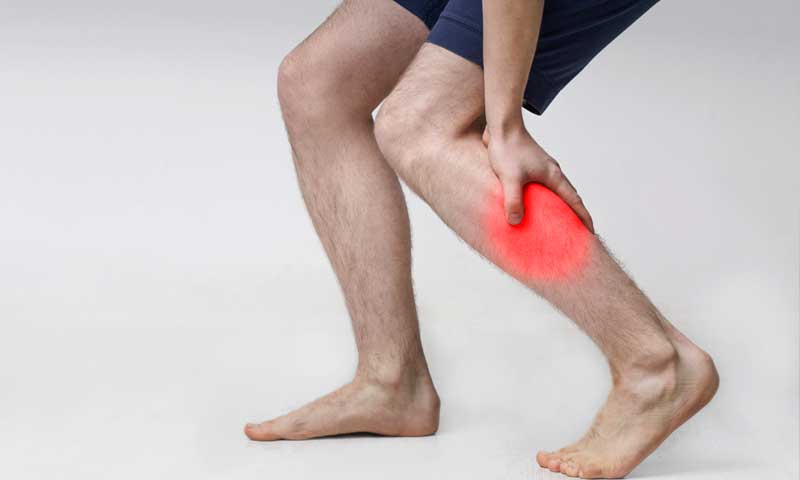Calf Pain
Side Bar
Calf Pain

What is calf pain?
Pain in the calf (the back part of the lower leg) is usually caused by a cramp or muscle strain. However, sometimes calf pain can be a symptom of something more serious.
What causes calf pain?
Cramp
Calf pain is usually caused by cramp, when the muscles suddenly contract. This might happen if you have been doing new exercises, if you are dehydrated, or if you are deficient in some minerals. Cramps normally go away quite quickly by themselves.
Calf strain
The calf is made up of 2 muscles called the gastrocnemius and the soleus. They meet at the Achilles tendon which is attached to the heel bone.
Overstretching or tearing either of these 2 calf muscles is known as a calf strain. Normally there is a sudden pain in the calf, and you may feel a pop, snap or tear. A calf strain may also mean you experience the following symptoms:
- Sudden pain at the back of the leg.
- The calf is stiff and weak when you walk.
- You find it hard to rise up onto your toes.
- You may have bruising on your calf after 1 or 2 days.
Other possible causes of calf pain include:
- Achilles tendonitis in which the Achilles tendon becomes inflamed.
- sciatica — when you have problems with the sciatic nerve which controls your lower leg
- a bruise due to injury
- diabetic peripheral neuropathy — when you have nerve damage that affects your feet, legs, arms and hand
- deep vein thrombosis (DVT) — when a blood clot forms in the deep veins of the arm or leg. This is a medical emergency. See your doctor immediately if you think you might have DVT (see below)
compartment syndrome — a serious condition
When should I see my doctor?
See your doctor if:
- your calf is swollen
- your calf is unusually cool or pale
- your leg is tingly or numb
- your leg is weak
- you have fluid retention
- your calf is red, warm and tender
- both legs are swollen and you have breathing problems
- your calf is painful during or after walking
- the pain gets worse or doesn't improve after a couple of days of being treated at home
- you have painful varicose veins
Seek medical attention straight away if you have the symptoms of DVT and you have recently been sitting for a long time, such as on a flight. These include if:
- your calf is swollen
- your leg is painful
- the skin of the calf is red
- your calf feels warm
